Which Cat Breed Fits Your Myers-Briggs® Personality Type
Almost two years ago I wrote an article about which dog breed matches your personality type. Since then I’ve gotten repeated requests to write a cat breed article. I’ve never owned a cat so I was hesitant to do this, but I finally buckled down and researched cats as well as spoke with cat owners to find out what kind of cats may have similar personalities to different Myers-Briggs® types. Obviously this article is mainly for fun and can’t be taken too seriously, but I still think there are some remarkable qualities that these cats and types have in common! I hope you enjoy!
Not sure what your personality type is? Take our new personality questionnaire here. Or you can take the official MBTI® here.
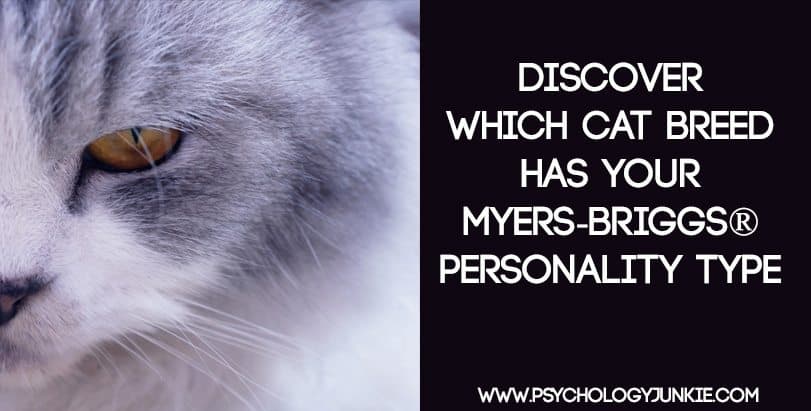
ISTJ – The British Shorthair
The British Shorthair is the feline embodiment of an ISTJ’s quiet resolve. These cats have that dignified, stoic presence that makes you feel like you’re in the company of a tiny monarch. They’re not the sort to leap dramatically across your furniture or beg for constant attention. Instead, they prefer to keep things orderly and predictable, lounging in the sun like the world’s most elegant paperweight. They learn the household rules quickly—no scratching the furniture, no messing up the litter box—and once those rules are learned, they’re gospel. Just like an ISTJ who files every fact away for future use, the British Shorthair remembers every lesson and expects the rest of the household to do the same.
But don’t mistake their reserved demeanor for a lack of devotion. Like a true ISTJ, the British Shorthair is loyal to their people, even if they’re not into clingy displays of affection. They’ll follow you from room to room, keeping a watchful eye, and if you’re down, they’re the first to nudge your hand as if to say, “Get up, there’s order to maintain.” They love a routine, thrive on it, and expect you to respect that too—no spontaneous disruptions, please. It’s all part of that timeless, reliable, and oddly charming ISTJ spirit.
ISFJ – The Persian
These fluffy guardians of the household are as serene as a still lake, preferring their world to be calm and peaceful. There’s a touch of old-world elegance to the Persian’s behavior—no clambering up the curtains or galloping through the living room like an adrenaline-fueled rodeo. No, Persians are all about grace and order, the kind of cat that would rather sit by your side, softly purring as you sip tea, than dive into chaos.
And like an ISFJ, the Persian is all about family. They’re the quiet protectors, the ones who’ll curl up beside you when you’re sad, content to just be there. But while they’re affectionate and loyal, they also understand the sacred need for alone time. They’ll slip away to nap in a sunbeam or gaze out the window with that dreamy, half-lidded stare, recharging their batteries so they can come back to you with that warm, gentle devotion they’ve perfected over centuries.
ESTJ – The Li Hua
The Li Hua cat is the feline version of an ESTJ: practical, no-nonsense, and always ready to take charge. These smart, alert tabbies are as confident as a seasoned general—no rat or mouse stands a chance against their sharp claws and quick reflexes. They’re not content to nap in the sun all day. No, the Li Hua is too busy managing household affairs—corralling other cats, keeping an eye on the kids, and maybe even fetching the newspaper for you (yes, they’re that smart). Their intelligence is legendary, and it shows in their analytical gaze and their tireless work ethic.
Like an ESTJ, the Li Hua cat doesn’t just show up, they show up ready to lead. They remember everything you teach them and expect you to keep up with their high standards. But don’t worry, they’re fiercely loyal, too. They’ll protect their family like it’s their job (because in their mind, it is). They’re the kind of cat who’ll greet you at the door like a pint-sized security guard, making sure everyone’s accounted for before settling in for a well-deserved break. It’s all part of the package—dependable, responsible, and always ready for action.
ESFJ – The German Rex
This little curly-coated charmer doesn’t want to be left alone in the corner; they want to be right in the middle of family life, playing the role of devoted caretaker. Whether it’s checking in on the kids or entertaining guests with their impressive acrobatic feats, the German Rex is the type of cat who insists on being part of the action. They’re happiest when they’re surrounded by loved ones, soaking up all the warmth and laughter like a tiny, purring sponge.
Like the ESFJ, the German Rex thrives on connection. They’re not the kind of cat to slink off and sulk in the shadows. No, they’ll be at your side (or on your lap) every chance they get, their soulful eyes practically demanding a little cuddle time. They live for that daily dose of affection—playing, petting, snuggling—and they’ll make sure you’re never short on love. In return, they’ll keep a careful watch over your household, ensuring that everyone’s safe and happy. After all, in their eyes, family isn’t just important—it’s everything.
ISTP – The Lynx
The lynx is the ultimate ISTP of the wild cat world—independent, observant, and always ready for action. With those tufted ears and laser-sharp gaze, the lynx is like a feline ninja, moving with precise, effortless grace. They don’t need the limelight, nor do they demand constant companionship. Instead, they’re happiest when they’re left to roam, test their skills, and explore their territory with that calm, focused curiosity that ISTPs are known for. Watching a lynx is like watching a master craftsman at work—every move is intentional, every step measured.
Like the ISTP, the lynx values freedom and efficiency above all else. They’re not here to play games or indulge in melodrama. They prefer to solve problems on their own terms, relying on their instincts and finely honed abilities. They’re not cold or uncaring, but they do need their space, their own quiet domain to retreat to after a long day of hunting and observing. In the lynx’s world, everything is about balance—stealth, strength, and independence—a perfect reflection of the ISTP’s steady, self-sufficient nature.
ISFP – The Anatolian
These quiet, tender-hearted giants have a natural elegance that makes them look like they stepped straight out of a Renaissance painting—except they’re not just pretty, they’re also playful explorers. They don’t need to make a lot of noise to be noticed. Their quiet purrs and gentle chirps are enough to let you know they’re around, offering a soothing presence without demanding center stage.
True to ISFP form, the Anatolian cat is happiest when they’re free to roam and test their boundaries. They might be content to curl up in the sun, but they’ll just as easily leap to the top of a cabinet or dive paws-first into a shallow pool. They’re always chasing the next beautiful moment, whether that’s a glimmer of sunlight on the floor or a curious puddle to splash in. And while they love their alone time, they’re also endlessly affectionate with those they trust, wrapping you in a calm, loving energy that never feels forced. It’s a quiet sort of magic, and it’s what makes the Anatolian such a striking reflection of the ISFP soul.
ESTP – The Bengal
Confidence and agility are the hallmarks of the rare Bengal cat. These cats need action and excitement, and can easily learn a variety of tricks. If they’re bored they may become destructive, pulling CDs out of the CD player or doing “parkour” around your home. Bengal cats are stimulated by risk and aren’t afraid to play in the water, or even jump in the shower with you! They are not all brawn, though. These cats are remarkably intelligent and enjoy puzzles that challenge their intelligence. Bengals also love attention and love and enjoy curling up on your lap for some TLC.
ESFP – The Sphynx
The Sphynx is a playful, exuberant, and friendly cat that never fails to make people smile. In a recent study by The Journal of Veterinary Behavior, the Sphynx was rated the most affectionate of all cat breeds. In fact, Sphynx’s are often used as therapy cats because of their loving, social nature. The Sphynx is also highly energetic and in tune with its surroundings. They love to explore, climb, chase, and play with puzzles and teaser toys. They crave external stimulation and excitement in their lives, but they can also enjoy snuggling up lovingly in their owner’s bed.
INTP – The Turkish Van
Turkish Vans are one of the most intelligent cat breeds of all, and they love to keep their mind stimulated by playing games and engaging in puzzles. They may not be the most graceful cats, but they make up for it with their wicked sense of humor. They enjoy experimenting with their surroundings and knocking things off shelves just to see what happens. They are curious cats who aren’t afraid of water like most other cats. In fact, they can easily learn to turn on faucets and may even lie in pools or bathtubs with cold running water on a hot day. Turkish Vans are independent cats. They don’t particularly want to be restrained or held. Their noses will actually turn red if they start getting upset and want alone time from people.
INFP – The Birman
The Birman is a quiet, intelligent, and affectionate cat who has the pointed pattern of a Siamese but without the yowly voice. Birmans are endlessly curious and imaginative cats who love to explore, play, and cuddle. They like to keep their instincts and imagination stimulated by engaging in interactive toys and learning about other animals in their environment. That said, they also like their alone time and enjoy some quiet, peaceful time to themselves. They are gentle, calm, and sweet-natured and don’t like to push themselves on their owners. They are soft-spoken cats with loyal affection for their families and enough curiosity to be engaging and fascinating.
ENTP – The Balinese
The Balinese is an endlessly curious, playful, and intelligent cat. They are known for their active minds, their agility, and their ability to quickly train themselves to learn new, novel tasks. Like the ENTP, the Balinese is interested in learning new things and exploring their environment in new and unique ways. Balinese want to be entertained on a regular basis and despise boredom. If they aren’t mentally stimulated, they will become little troublemakers; unrolling toilet paper rolls or emptying tissue boxes. They also enjoy engaging with their owners, even sleeping in bed with them at night!
ENFP – The Singapura
The Singapura is an active, curious, sociable cat who loves to explore and play. They are friendly and imaginative, finding new and novel ways to entertain or engage with their environment. They enjoy jumping into boxes, climbing the highest shelves, or figuring out puzzle toys. They are also kind cats, who enjoy cheering up their owners and keeping them company when they feel sick or sad. Like the ENFP, the Singapura is both mentally active but kind. The Cat Fancier Association calls the Singapura “an extroverted, curious, playful but nondestructive cat.” Catster.com says “She’s incredibly intelligent, active, energetic, outgoing, and always in the mood for a good play session.”
INTJ – The Norwegian Forest Cat
Norwegian Forest Cats are highly intelligent and independent. While they enjoy living in a family, they also enjoy their freedom to explore and don’t need (or want) constant interaction. Norwegian Forest Cats learn quickly and are extremely alert. Like the INTJ, the Norwegian Forest Cat likes to stay mentally challenged and will enjoy learning new things on a regular basis. Puzzle toys and learning tricks keep them happy and engaged mentally. They also seem to intuitively know how to catch mice and rodents, in fact, they were once used by Vikings as mousers on ships.
INFJ – The Russian Blue
Russian Blue’s are gentle, quiet, and highly intuitive cats. They seem to naturally sense their owner’s moods and will snuggle up when they sense their family members are sad or sick. They are reserved cats who like to observe people from a distance and get an understanding of who they are before engaging with them. Once they trust someone they will be friendly and loving, eagerly finding a quiet seat next to them or fetching a toy or “helping” around the house. They appreciate affirmation and mental stimulation, but they also need their time alone. Cattime.com says of Russian Blues, “The Russian Blue is a sensitive cat who doesn’t like to be ignored and will be hurt if he doesn’t receive the same amount of affection he gives.”
ENTJ – The Siamese
Siamese cats are outgoing, intelligent, and domineering cats. They love to communicate and make their opinions known. Cattime.com says of Siamese, “They will tell you exactly what they think, in a loud, raspy voice, and they expect you to pay attention and act on their advice.” Like the ENTJ, the Siamese cat has no problem taking charge and supervising the situation. They are also intensely clever and need to keep their minds busy with puzzle toys, teaser toys, and plenty of exercise. They are also intuitive hunters and are considered skilled mousers and ratters in multiple regions of the world.
ENFJ – Tonkinese
Tonkinese are enthusiastic, friendly, and intelligent cats. They enjoy staying close to their loved ones; riding on their shoulders or sitting on their laps and playing with toys. They also have strong instincts and are relentless hunters, intuitively sensing where to find their prey. The Tonkinese can be stubborn and strong-willed, but they are also incredibly kind-hearted and generous with their owners. They will bring them mice as symbols of their love, and they will learn tricks eagerly.
This post contains affiliate links. I only recommend products I truly believe in.
Find out more about your personality type in our eBooks, Discovering You: Unlocking the Power of Personality Type or The INFJ – Understanding the Mystic. You can also connect with me via Facebook, Instagram, or Twitter!
Other articles you might enjoy!
Which Dog Breed Fits Your Myers-Briggs® Personality Type?
What Terrifies You? Based on Your Myers-Briggs® Personality Type
Discover Your Superpower Based on Your Myers-Briggs® Personality Type


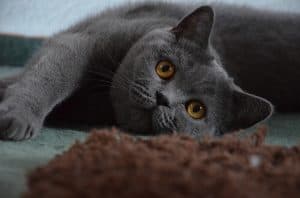
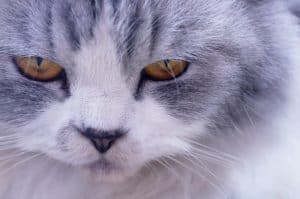


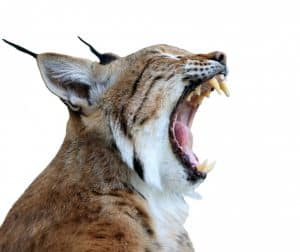

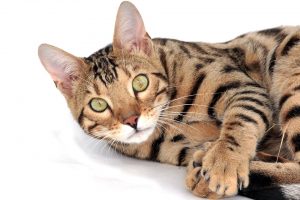
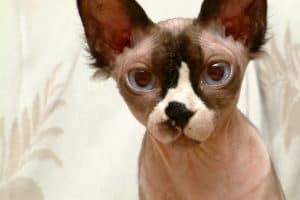
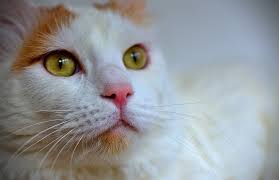
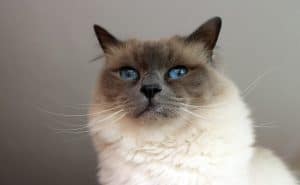
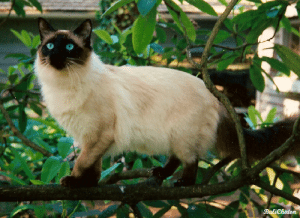
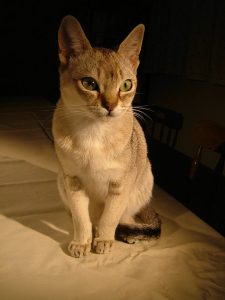
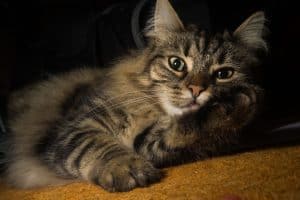

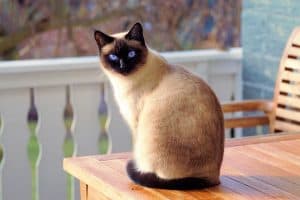



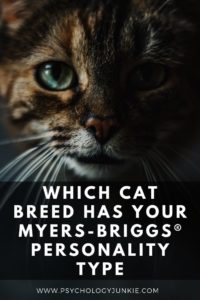



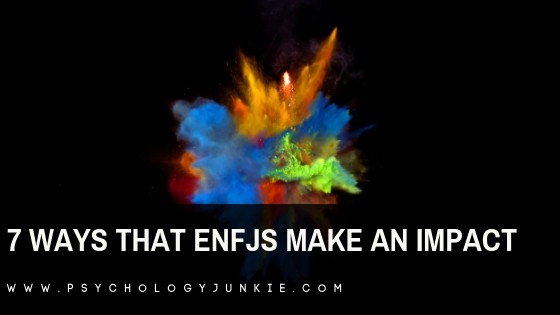


hi! I’ve been told several times that i sometimes come across as cold and indifferent (especially to boys). I know that i’m not chatty and don’t pay much attention to conversations i’m not interested in and the guys my age seem to have extra immature conversations, but i still like these people. Is this normal for an infp? Because all the posts i’ve read seem to indicate that infps just love listening to people and showing all their emotions
btw I’m 17
INFPs don’t like to show all their emotions actually! Because Fi is introverted in direction they generally keep their emotions more under wraps. I’ve read that IXFPs can cry more easily than other types because they are deeply affected by injustice and cruelty, but that they’d rather not. Generally they are very private about their emotions and only share them with people they trust in a very deep way.
I’m pretty sure it’s normal for infps
As an INFJ with two Tonkinese cats I can’t say that they are not ENFJ but INFJ, or simply that this breed is perfect heaven to live with if you area healthy INFJ with a strongly developed Fe. I can say, though, that I have a hard time seeing their Ti as inferior, as these ones could best any chess master in a heartbeat. After all the breed originally was bred as a combination of Siamese and Burmese, and they certainly brought that intelligence with them.Their strong will in particular reminds me very much of myself when I was a gifted child, although I have to admit they are not nearly as self-conscious and inhibited as I was, although I have noticed that much like INFJs they carefully choose who they will reveal themselves to, and they masters at knowing who has the sort of loving heart that can appreciate them. All in all, if you are an INFJ and have chosen not to have children, but want a being to nurture who will help you develop your Fe to heretofore unreached heights, they’re the cats to have.
Bingo! I am an INFJ who lives with the long haired version of the Russian Blue ( called a Nebelung ). Her personality is exactly as described in the article, and she is the “purrfect” companion for me.
That’s so cool!! I’ve always thought they were beautiful cats 🙂